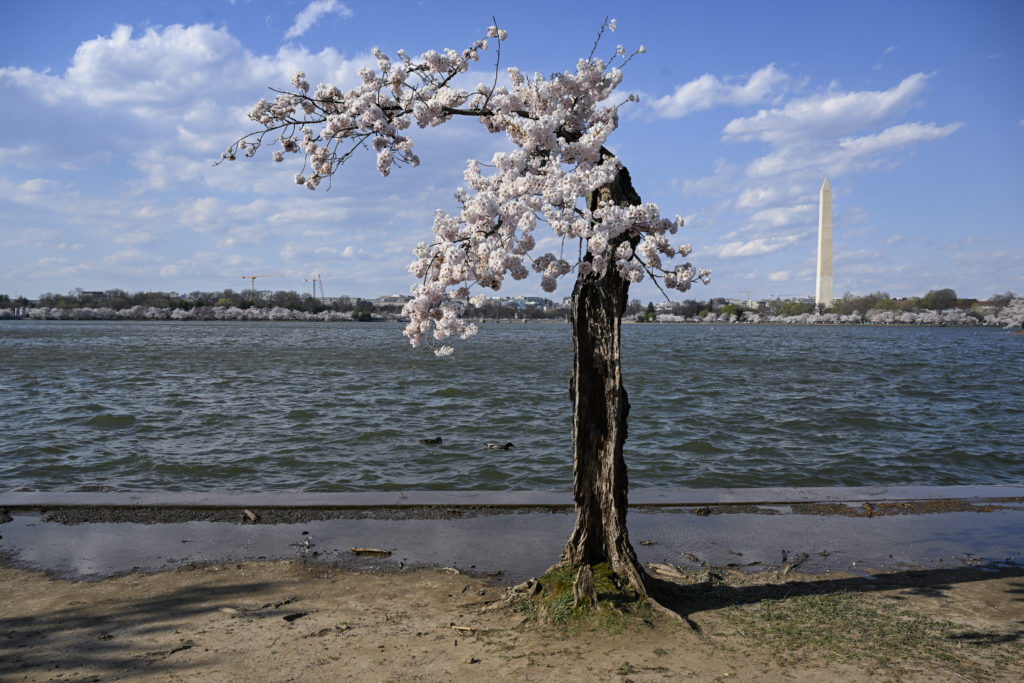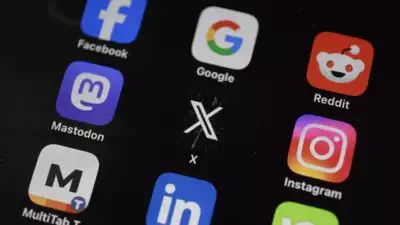뉴스&스피킹(영자신문)
하루 10분이면 영어에 대한 두려움을 극복하고 누구나 유창하게 영어를 구사하실 수 있습니다.
-
 Cherry Trees to Be Removed in Washington Improvement Project Washington D.C. officials say some of the city’s famous cherry trees will need to be cut down as part of a major improvement project.
Cherry Trees to Be Removed in Washington Improvement Project Washington D.C. officials say some of the city’s famous cherry trees will need to be cut down as part of a major improvement project.
Up to 1.5 million people are expected to visit America’s capital in the early spring to attend the city's National Cherry Blossom Festival. The event celebrates Japan’s 1912 gift to the city of about 3,000 cherry trees.
During the festival, blossoms on the cherry trees are in full bloom. The main part of the festival takes place around Washington’s Tidal Basin, the area near the Jefferson Memorial that has many cherry trees.
But the Tidal Basin – which is connected to the nearby Potomac River – is in need of repairs. Currently, when water levels rise, flooding puts some trees under several centimeters of water. The improvement work will aim to build up and improve an old seawall meant to hold back the floodwaters.
The U.S. National Park Service oversees the Tidal Basin, as well as the large green area of downtown Washington D.C. known as the National Mall. Officials say about 300 trees – including nearly 160 cherry trees – will be cut down during the work. After the improvements, about 300 trees will be planted as replacements.
Mike Litterst is a spokesman for the National Park Service. He told The Associated Press (AP) the $133 million project is expected to take about three years. “It’s certainly going to benefit the visitor experience, and that’s very important to us," Litterst said.
But he added that most of all, it would “benefit the cherry trees, who right now are every day, twice a day, seeing their roots inundated with the brackish water of the Tidal Basin.”
Litterst said the removed trees will be ground up and mixed with nutrient rich soil to be used to protect the roots of surviving trees. This way, the effort can be seen as providing “a good second life” for the trees being cut down, he added.
One of the trees set to be removed from around the Tidal Basin received so much attention in 2020 that it became a social media star. The tree, nicknamed Stumpy, is short and oddly shaped compared to others in the area.
At the height of the COVID-19 pandemic, Stumpy’s popularity led to the sale of many tree-related materials. The tree was also a common spot for visitors to take “selfies” while standing next to Stumpy.
Officials said the U.S. National Arboretum came up with a way to save the memory of Stumpy. Scientists plan to capture genetic material and use it to create new copies, or clones, of the famous tree.
Organizers of the yearly event said that because of changing climate, the festival’s “peak bloom” is beginning earlier and earlier. The peak period describes when at least 70 percent of the city’s 3,700 cherry trees will be flowering.
This year, peak bloom was expected to happen on March 23, the AP reports. But the official start of the event ended up being declared on March 17.
By comparison, 2013’s peak bloom began on April 9. Leslie Frattaroli is national resources program manager for the Park Service. She told the AP in February that peak bloom could regularly come in the middle of March by 2050.
I’m Bryan Lynn.View -
 Small Living Space Returns as Housing Prices Rise in US Barbara Peraza-Garcia is from Venezuela. She lives in a single-room apartment in Seattle, Washington with her family.
Small Living Space Returns as Housing Prices Rise in US Barbara Peraza-Garcia is from Venezuela. She lives in a single-room apartment in Seattle, Washington with her family.
The family includes her partner and their two small children.
They do not have much space, only 17 square meters. But they are happy for now.
“It’s warm. We can cook (for) ourselves. We have a private bathroom. It’s quiet,” she said. “We can be here as a family now.”
Peraza-Garcia and her family left Venezuela to escape crime and so she could receive medication for a kidney problem.
They can only pay for a small living space, but it is less costly than most small living spaces in American cities. It is $900 per month, but that is about $500 less than traditional small apartments known as studios, which are slightly larger.
Most single-room apartments in the United States disappeared after the end of World War II when many people left cities for new suburbs. The Furman Center is part of New York University. It supports research into real property and city policy. It produced research that showed New York City lost 70,000 single room housing units between the first part of the 1900s and 2014.
At the same time, real estate companies built new city housing, but the developers did not center their work on small living spaces. In recent years, single people needed to find roommates and share two- or three-bedroom apartments in cities if they did not have much money.
Now, however, many American cities are worried about increasing living costs and homelessness. The small living spaces, known as single room occupancy units, once called SROs, are becoming common again. They are being called “micro-apartments.”
New York, Seattle and Portland, Oregon are putting money into smaller living spaces. New York’s governor, Kathy Hochul, announced a $50 million plan to repair and renovate 500 SROs across the state.
In Portland, a group called Central City Concern supervises about 1,000 SROs and makes them available at a very low cost to people who might otherwise be homeless. They are $550 per month.
Cheyenne Welbourne moved into one of the units last year after years of living on the street. The room is only big enough for a small bed, a television, a chair and a toilet and sink. But it means Welbourne, as he said, can have “a nice home, a decent home.”
When he moved into the apartment, all he had was one bag and he was glad he did not have to spend another winter outside. “I just want a home, you know?” he said.
The small units are good for single people, but some experts worry that not enough is being done for families. Marisa Zapata is a land-use professor at Portland State University. Zapata said she worries that governments and planners will see the SROs as a “solution, and not do right by our community members by building the housing that people want.”
But Vicki Been, a law professor and a director at the Furman Center, said she hopes the work being done in places like Portland and Seattle will help other cities understand there is still a need for simple housing.
“The alternatives are...people being in shelters, people being on the street, people being doubled, tripled, quadrupled up,” said Been.
Even if the Peraza-Garcia family would like more space, Barbara said she is happy. Her kids get to live near their relatives, and they can be close to food stores and green spaces to play in. She said the family will work to save some money and try to get better jobs during the next year. If that works, they can move to a bigger place.
“We’re happy because we’re here in a quiet place where we can be together as a family,” she said.
I’m Dan Friedell.View -
 How to Find AI ‘Deepfake’ Images Fake photos, videos, and audio are spreading online as a result of the rise and misuse of artificial intelligence (AI) tools. And it is getting harder to tell what is real from what is not.
How to Find AI ‘Deepfake’ Images Fake photos, videos, and audio are spreading online as a result of the rise and misuse of artificial intelligence (AI) tools. And it is getting harder to tell what is real from what is not.
Video and image creators like DALL-E, Midjourney, and OpenAI’s Sora make it easy for people with little technical skills to create “deepfakes.”
The fake images might seem harmless. But they can be used to cheat people out of money, steal identities, spread propaganda, and unfairly influence elections.
How to tell it is a deepfake
Just a year ago, the technology was far from perfect and it was easier to tell that a photo had been created with AI. Fake images then showed clear errors, like hands with six fingers or eyeglasses with different shapes.
But as AI has improved, it has become a lot harder.
Henry Ajder is founder of the AI advising company Latent Space Advisory and a leading expert in generative AI. He said some widely shared advice — like looking for unnatural eye movements in people in deepfake videos — no longer holds.
Still, there are some things to look for, he said.
Ajder said a lot of AI deepfake photos, especially of people, have a “smoothing effect” that leaves skin looking very “polished.” He warned, however, that AI can sometimes change the photos and remove the signs of AI creation.
Look at shadows and lighting. Often the subject is clear and appears lifelike, but elements in the rest of the photo might not seem so real or polished.
Look at the faces
One of the most common deepfakes is exchanging one face for another. The practice is called face-swapping.
Experts advise looking closely at the edges of the face. Does the facial skin color match the rest of the head or body? Are the edges of the face sharp or unclear?
If you suspect video of a person speaking has been changed by AI, look at their mouth. Do their lip movements line up with the audio perfectly?
Cybersecurity company Norton says that the technology is not ready to create individual teeth. So Ajder suggests looking at their teeth. Are they clear, or are they unclear and somehow do not appear like they would in real life?
Sometimes the context of the photo is important. Take a minute to consider if what you are seeing could actually happen.
The Poynter journalism website advises that if you see a well-known person do something that seems unrealistic or unlike themselves, it could be a deepfake.
Using AI to find the fakes
Another method is to use AI to fight AI.
Microsoft has developed a tool that can study photos or videos and rate if it has been changed. Technology company Intel’s FakeCatcher uses computer programs to study the smallest parts of an image, called pixels, to say if it is real or fake.
However, some of these tools are not available to the public. That is because researchers do not want to help bad actors improve their deepfakes.
All this being said, AI has been developing very quickly. And AI models are being trained on internet data to produce increasingly better content with fewer mistakes.
That means this advice to find deepfakes could be incorrect even a year from now.
Experts say it might even be dangerous to suggest the average person can find deepfakes. That is because even for trained eyes, it is becoming increasingly difficult.
I’m Gregory Stachel.View -
 South Korean Scientists Develop ‘Beef Rice’ South Korean researchers have combined cow muscle cells with rice grains. They say the new rice is an important step towards a sustainable, less costly source of protein. The researchers suggested it could replace the meat of farmed cattle, or beef.
South Korean Scientists Develop ‘Beef Rice’ South Korean researchers have combined cow muscle cells with rice grains. They say the new rice is an important step towards a sustainable, less costly source of protein. The researchers suggested it could replace the meat of farmed cattle, or beef.
Professor Jinkee Hong of Yonsei University led the research. Hong said the “beef rice” is the first product of its kind. The results of the research were recently published in Matter.
The beef rice uses grain particles as the base for growing animal muscle and fat cells.
The researchers treated rice grains with chemicals called enzymes to create an environment for cell growth. They added cells from cattle to create the final product, which is a combination, or hybrid, of the two. The result looks like a grain of rice with a pink color.
Companies around the world have launched efforts to develop meat that is grown in a laboratory. One of the latest attempts involves plant-based chicken and eel meat developed from soybean that is sold in Singapore.
Hong’s team said rice has an added gain in terms of safety compared to soy or nuts because fewer people have allergic reactions to it.
He said that if it is developed into food products, “cultured beef rice could serve as a sustainable protein source.” He added that it would be good in environments where traditional animal farming is too difficult.
The beef rice contains around eight percent more protein and seven percent more fat than normal rice. Hong noted the protein is 18 percent animal based. That makes it a good source of important nutrients needed by humans called essential amino acids.
Beef rice costs about two dollars per kilogram. Hong said it results in the release of less carbon gas than traditional cattle raising. He said that it could compete with other products in stores.
Hong said there are still some problems in production. And, he added, it will not be easy to get people to accept its taste and how it feels in the mouth, or its texture.
Keum Dong-kyu recently ate the beef rice at a restaurant in the Korean capital Seoul. He praised the new idea.
Keum said, “But honestly, I don't think it can replicate the juiciness or texture of real beef.”
Christian Krammel, who is from Germany, expressed hope for the future.
Krammel said, “Now, it does not compare to beef yet, but as I see the research is in early stages, I would say it's a great way forward.”
I’m Jill Robbins.View -
 Florida Approves Law Banning Social Media for Children under 14 Florida Governor Ron DeSantis on Monday signed a law that bans children in the state under the age of 14 from having a social media account.
Florida Approves Law Banning Social Media for Children under 14 Florida Governor Ron DeSantis on Monday signed a law that bans children in the state under the age of 14 from having a social media account.
The measure requires parental permission before 14 and 15 year olds can sign up for personal social media accounts in Florida.
Supporters say the bill protects children from possible online harm, including threats to mental health and privacy.
Critics have said the law might violate the U.S. Constitution’s First Amendment protection of free speech. Some opponents have said they think parents – not the government – should be the ones to decide which restrictions are best for their child. Meta, the parent company of Facebook, opposed the legislation for example.
Florida’s legislature passed the law earlier this month. It was the second version of the measure. The first version, which passed Florida’s legislature in February, would have completely banned children under age 16 from social media.
DeSantis vetoed that version of the bill, saying he thought it was too restrictive of parental rights. But the governor’s office worked with legislators to come up with a new measure he could support. The new law leaves it up to parents to decide whether their 16 and 17 year olds can sign up for social media accounts.
In a statement, DeSantis said research had repeatedly shown that social media services can harm children in several major ways. The legislation, he added, is designed to give parents “a greater ability to protect their children."
The law is set to take effect on January 1, 2025. But experts say the measure is likely to face legal challenges in court.
DeSantis noted that another bill he signed into law two years ago was recently struck down by a federal appeals court. That law banned employers from requiring training sessions that included discussions about race, diversity and other issues. The appeals court ruled that such training methods violated the constitutional free speech rights of employers.
The new law was guided through Florida’s House of Representatives by Republican Speaker Paul Renner. At a bill-signing ceremony at a school, Renner said a child, whose brain is still developing, “doesn’t have the ability to know that they’re being sucked into these addictive technologies.” He added, “Because of that, we have to step in for them.”
The bill does not name any specific social media service. But it states that it targets social media sites using tools to get users to stay online for long periods. The measure does not cover services that mainly provide email, messaging or texting services.
The law requires social media companies to permanently remove personal information collected from closed accounts. And it lets parents bring civil lawsuits against services failing to do so.
Several U.S. states have considered similar legislation. In March 2023, Utah became the first to enact laws covering children's use of social media. Measures in Arkansas, Louisiana, Ohio and Texas soon followed. Several other states are also developing new rules.
The Arkansas law required parental consent for minors to create new social media accounts. A federal judge blocked the law in August. The judge ruled the legislation was likely unconstitutional.
Florida has enacted additional measures aimed at protecting children from possible technological harms. Last year, it became the first state to strongly restrict phones in schools. The law requires all public schools in Florida to ban student cellphone use and block social media services during class.
I’m Bryan Lynn.View

